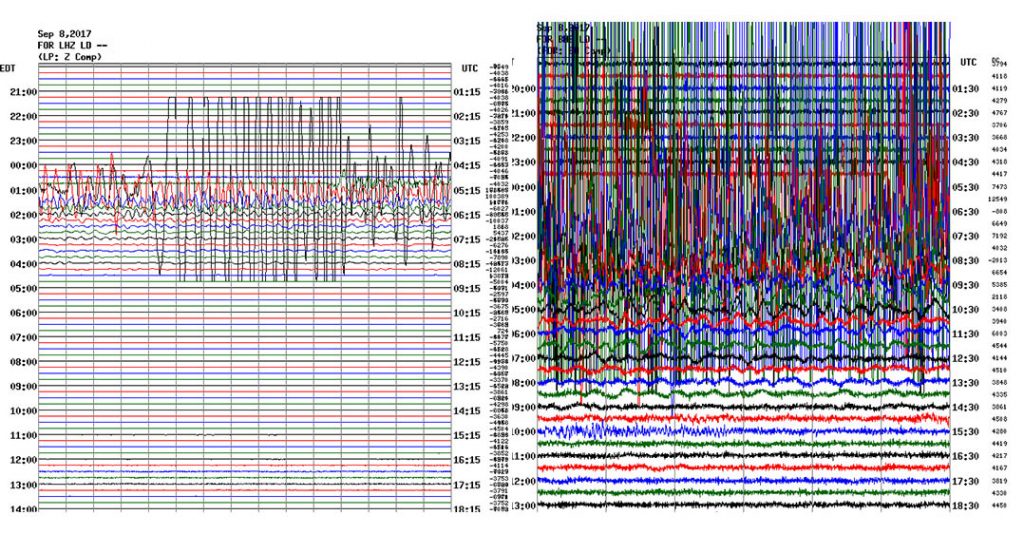“It saturated the detector,” said Holler.
With more than a century of use behind it, the station is still one of the few in New York state, and now operates with digital technology. There are two instruments, one of which is less sensitive so that it could survive should a large earthquake hit New York. The guts of the instruments are still fundamentally the same as a century ago—concrete masses attached to springs at bedrock with motion generating an electric current that measures north/south, east/west, and vertical movements. Each movement is reflected via different colors on the seismograph chart.
“Normally you don’t see much on the strong motion instrument, but the Mexico earthquake was very strong and relatively near so we got a good signal, even on the less sensitive instrument,” said Crooker.
Holler said the Mexican tremors reached Rose Hill within minutes and the device has picked up tremors from as far away as Sumatra. The data is share as part of the Lamont Cooperative Seismic Network and is streamed to the USGS data repository.


